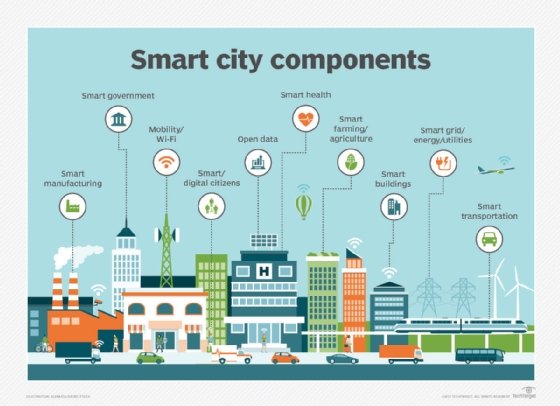In the ever-evolving landscape of urban living, the concept of smart cities has emerged as a revolutionary force, promising to reshape the techarp.co.uk way we experience and interact with our urban environments. This article delves into the intricacies of smart cities, exploring their definition, key components, and the profound impact they have on enhancing the quality of urban life.
What are Smart Cities?
Definition and Core Principles
Smart cities leverage advanced technologies to optimize various aspects of urban living, ranging from infrastructure and transportation to healthcare and public services. At their core, smart cities aim to enhance efficiency, sustainability, and overall quality of life for their residents. The integration of cutting-edge technologies, such as the Internet of Things (IoT), artificial intelligence (AI), and data analytics, distinguishes smart cities from traditional urban spaces.
Key Components of Smart Cities
1. Smart Infrastructure
Smart infrastructure forms the backbone of a smart city. This includes intelligent transportation systems, energy-efficient buildings, and digitally connected utilities. The integration of sensors and IoT devices allows for real-time monitoring and management, optimizing resource utilization and reducing environmental impact.
2. Data-Driven Governance
In a smart city, data serves as the catalyst for informed decision-making. Municipalities collect and analyze data from various sources to gain insights into traffic patterns, public services usage, and environmental conditions. This data-driven approach enables city planners to respond proactively to challenges and streamline resource allocation.
3. Connected Transportation
Smart cities prioritize efficient and sustainable transportation systems. This involves the integration of smart traffic management, electric mobility options, and intelligent public transit systems. The goal is to reduce congestion, lower emissions, and enhance overall transportation accessibility.
4. Innovative Healthcare Solutions
Healthcare in smart cities is characterized by the adoption of telemedicine, remote patient monitoring, and data-driven diagnostics. These technologies not only improve access to healthcare services but also enable proactive health management for residents.
5. Digital Inclusion and Accessibility
Smart cities strive for inclusivity, ensuring that digital technologies are accessible to all residents. Initiatives like free public Wi-Fi, digital literacy programs, and smart public spaces contribute to creating a more connected and empowered community.
Impact on Urban Living
1. Enhanced Quality of Life
Smart cities are designed to prioritize the well-being of residents. Through efficient services, improved infrastructure, and enhanced public spaces, residents experience an elevated quality of life. The integration of technology also facilitates quicker response times to emergencies, contributing to overall safety.
2. Environmental Sustainability
The use of smart technologies in energy management, waste reduction, and transportation significantly contributes to environmental sustainability. Smart cities aim to minimize their ecological footprint by optimizing resource consumption and promoting eco-friendly practices.
3. Economic Prosperity
The implementation of smart technologies attracts businesses and fosters innovation, driving economic growth within smart cities. The creation of a conducive environment for startups and the establishment of tech hubs contribute to job creation and economic prosperity.
4. Efficient Transportation
Smart transportation systems alleviate traffic congestion, reduce commute times, and lower carbon emissions. Residents benefit from seamless connectivity, real-time traffic updates, and diverse mobility options, transforming the way they navigate urban spaces.
Challenges and Future Prospects
1. Privacy Concerns
As smart cities rely heavily on data collection, concerns about privacy and data security arise. Striking a balance between leveraging data for urban improvement and safeguarding individual privacy is a key challenge for the continued development of smart cities.
2. Infrastructure Investment
The transition to a smart city requires substantial financial investment in new technologies and infrastructure. Many cities face the challenge of securing funding for these initiatives, which can hinder progress in achieving a fully integrated smart ecosystem.
3. Digital Divide
Ensuring that the benefits of smart technologies are accessible to all residents is crucial. The digital divide, where certain demographics lack access to or knowledge of digital technologies, poses a challenge to the inclusive vision of smart cities.
4. Regulatory Framework
Developing a comprehensive regulatory framework for smart cities is essential to address issues related to data governance, cybersecurity, and ethical considerations. Governments must navigate the complex landscape of regulations to ensure responsible and ethical implementation of smart city technologies.
Conclusion
Smart cities represent a transformative paradigm in urban living, leveraging technology to create more efficient, sustainable, and livable spaces. While challenges exist, the potential benefits in terms of enhanced quality of life, economic prosperity, and environmental sustainability make the pursuit of smart cities a compelling endeavor. As we navigate the complexities of urban development, the evolution of smart cities continues to shape the future of our collective urban experience.
